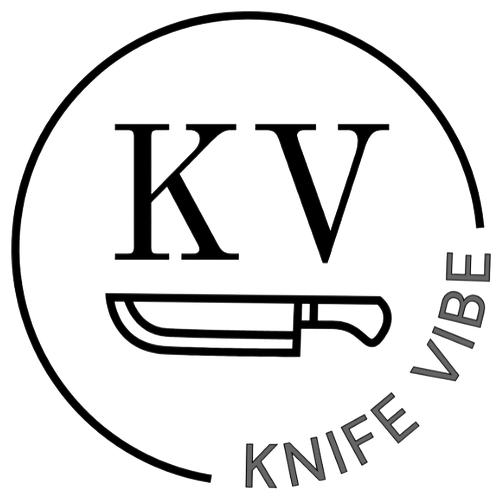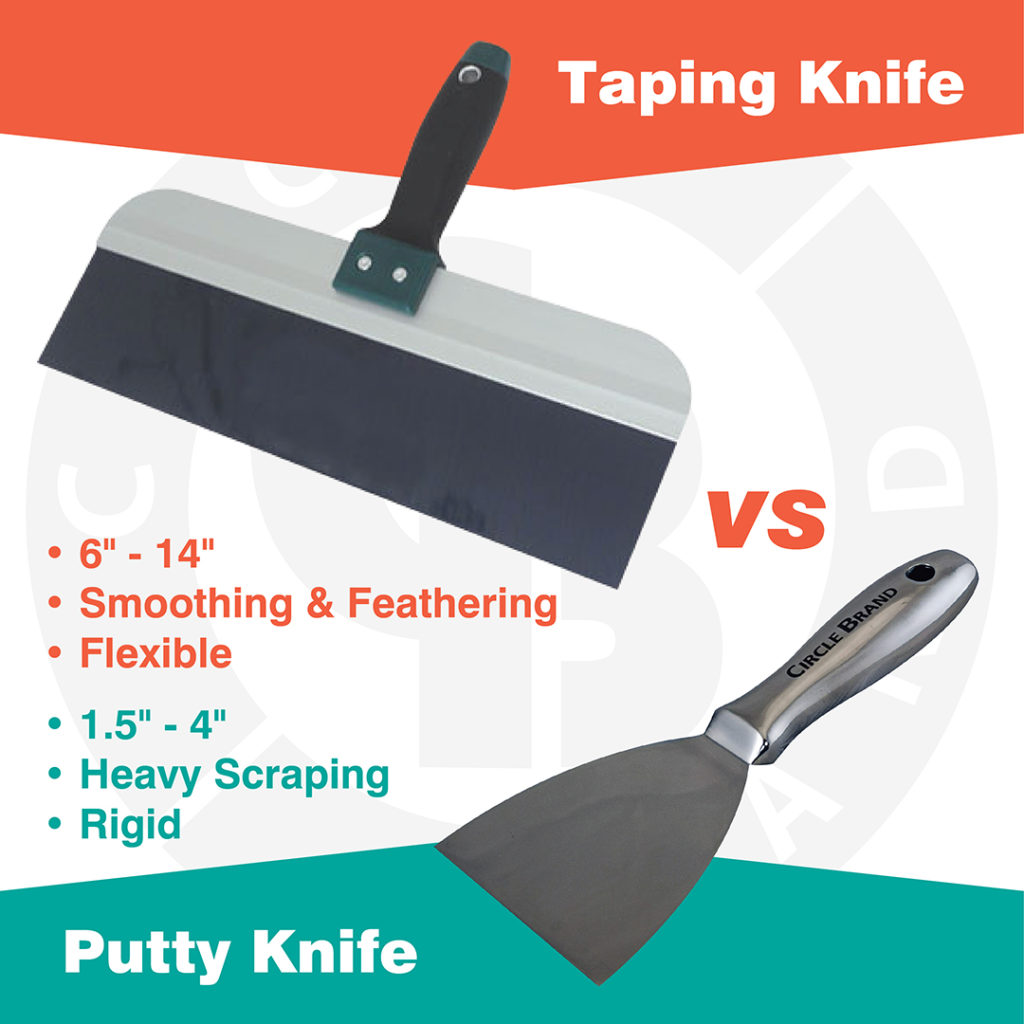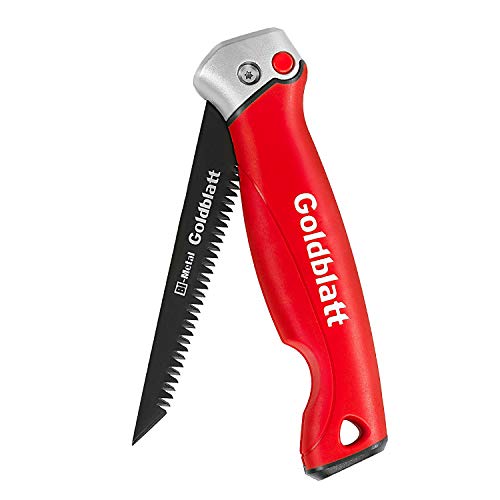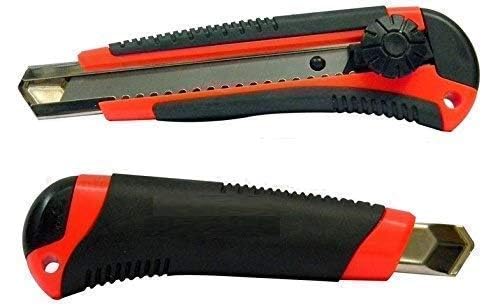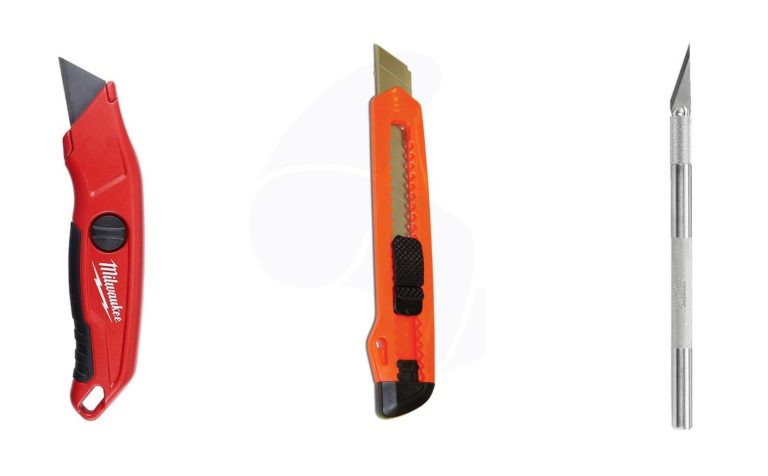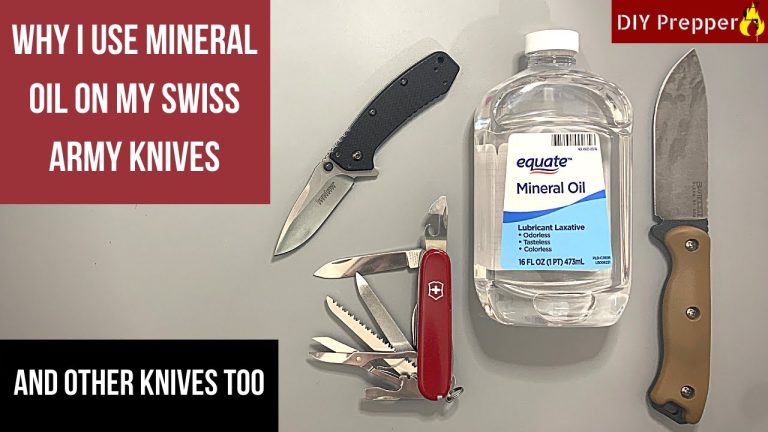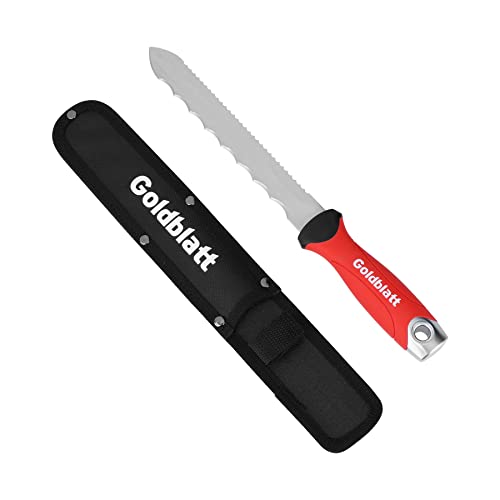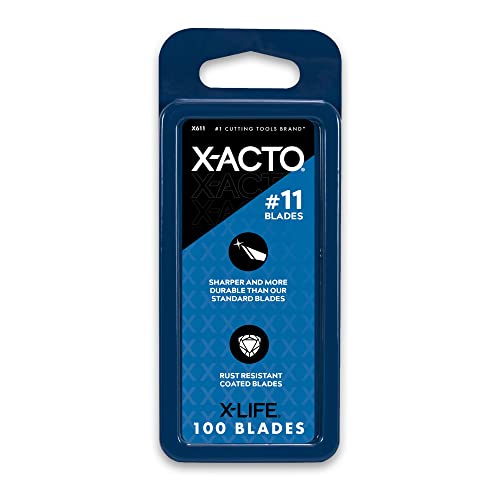Taping Knife Vs Joint Knife: Ultimate Guide to Drywall Tools
When tackling drywall projects, two essential tools come into play: the taping knife and the joint knife. Both are crucial, but they serve different purposes.
Understanding the differences between a taping knife and a joint knife can save time and effort. These tools might look similar, but their functions vary significantly. The taping knife is typically wider and used for applying drywall tape and smoothing large areas.
On the other hand, the joint knife, often narrower, is ideal for applying joint compound and patching smaller areas. Knowing which tool to use ensures better results in drywall finishing. In this guide, we will explore the unique features, benefits, and specific uses of both knives to help you make an informed decision for your next project.

Credit: www.youtube.com
Introduction To Drywall Tools
Drywall installation requires specific tools for a smooth finish. Beginners and professionals alike need the right equipment. This ensures the job gets done efficiently. Drywall tools vary in shape, size, and purpose. Each tool has a unique role in the process. Understanding these tools is crucial for anyone working with drywall.
Importance Of The Right Tools
Using the right tools can make a significant difference. It can affect the quality of the finished wall. The right tools also save time and effort. They help achieve a more professional look. In contrast, using the wrong tools can lead to mistakes. This can result in extra work and frustration.
Common Drywall Tools
Several tools are essential for drywall work. A taping knife and a joint knife are among the most important. The taping knife is wide and flexible. It’s used for spreading joint compound. The joint knife is smaller and stiffer. It’s ideal for applying compound to tight areas. Other common tools include sanders, screw guns, and utility knives. Each has a specific function in the drywall process.
Taping Knife
A taping knife is an essential tool for drywall finishing. It helps create smooth, even surfaces. This tool is vital for applying joint compound and for final touches. Understanding its uses and design can help you choose the right one.
What Is A Taping Knife?
A taping knife is a wide-blade tool used in drywall work. It spreads joint compound over seams and holes. The blade is thin and flexible. This allows for smooth, even application. Taping knives come in various sizes, usually between 4 to 12 inches.
Primary Uses
Taping knives are mainly used for drywall finishing. They apply joint compound to seams between drywall sheets. This helps create a smooth surface. The tool is also used for covering screws and nails. It can fill gaps and holes in walls. A taping knife is crucial for achieving a professional finish.
Material And Design
Taping knives are usually made of stainless steel. This material is durable and rust-resistant. The handle is often made of wood or plastic. A comfortable grip is essential for prolonged use. The blade’s flexibility is important for smooth application. Some knives have a slightly curved blade. This design helps spread the compound evenly.
Joint Knife
The joint knife is a crucial tool for drywall work. It helps spread joint compound over seams and holes. This tool ensures a smooth finish for walls and ceilings. Let’s explore what makes the joint knife special.
What Is A Joint Knife?
A joint knife is a flat, wide tool. It has a flexible blade. This blade spreads joint compound evenly. The knife comes in various sizes. Most common sizes range from 4 to 12 inches. The size you need depends on the job.
Primary Uses
The joint knife fills gaps and seams in drywall. It helps spread joint compound smoothly. This prevents cracks and creates a seamless finish. It also scrapes away excess compound. This is key for a clean, professional look.
Material And Design
Joint knives have blades made of stainless steel or carbon steel. Stainless steel blades resist rust. Carbon steel blades are very durable. The handles are wood, plastic, or rubber. Rubber handles provide a comfortable grip. The design of the knife ensures ease of use. The blade’s flexibility is important. It allows for better control when spreading compound.
Key Differences
Understanding the key differences between a taping knife and a joint knife is essential for anyone involved in drywall work. Both tools serve specific purposes, and knowing their differences can help you choose the right one for your project. Let’s explore these differences under the subheadings of Blade Size and Shape, Handle Design, and Material Composition.
Blade Size And Shape
The blade size and shape of taping knives and joint knives differ significantly. Taping knives typically have a wider blade, ranging from 6 to 12 inches. This wide blade allows for spreading joint compound over large areas. On the other hand, joint knives usually have a narrower blade, about 3 to 6 inches wide. This narrow blade is ideal for detailed work and applying joint compound in tight spaces.
The shape of the blades also varies. Taping knives often feature a slight curve, which helps in feathering the edges of the compound. Joint knives usually have a straight edge, allowing for precision in corners and smaller areas.
Handle Design
The handle design of these tools can impact comfort and ease of use. Taping knives often come with longer handles, providing better leverage and control over larger surfaces. These handles can be made of wood, plastic, or metal, depending on the model.
Joint knives, however, typically have shorter handles. This design allows for greater precision and control in detailed work. The handles of joint knives are usually ergonomically designed to fit comfortably in hand, reducing strain during extended use.
Material Composition
Material composition plays a crucial role in the durability and performance of these knives. Taping knives are commonly made from stainless steel or high-carbon steel. Stainless steel blades resist rust and are easier to clean, while high-carbon steel blades offer excellent durability and strength.
Joint knives, on the other hand, are often made from stainless steel or flexible plastic. The flexibility of plastic blades can be beneficial for small, intricate tasks and for working on uneven surfaces. Stainless steel joint knives provide durability and a smooth finish.
To summarize the key differences:
| Feature | Taping Knife | Joint Knife |
|---|---|---|
| Blade Size | Wider (6-12 inches) | Narrower (3-6 inches) |
| Blade Shape | Slight Curve | Straight Edge |
| Handle Design | Longer | Shorter |
| Material Composition | Stainless Steel or High-Carbon Steel | Stainless Steel or Plastic |
When To Use A Taping Knife
A taping knife is a must-have for drywall projects. Its wide blade and flexible design make it versatile. Let’s explore its uses.
Applying Joint Compound
Use a taping knife to apply joint compound. Its wide blade spreads the compound smoothly. This ensures an even surface.
Here’s how to apply joint compound with a taping knife:
- Scoop compound with the blade.
- Spread it over seams and holes.
- Smooth it out with even pressure.
This method helps cover large areas quickly.
Taping Seams
A taping knife is perfect for taping seams between drywall sheets. Its wide blade covers the tape fully. This ensures a strong bond.
Follow these steps for taping seams:
- Apply a thin layer of compound over the seam.
- Place the tape over the compound.
- Press the tape with the knife, removing excess compound.
This process hides seams and gives a smooth finish.
Finishing Touches
The taping knife is ideal for finishing touches. It helps achieve a professional look. Use it to smooth out any imperfections.
Here’s how to use it for final touches:
- Inspect the surface for bumps or ridges.
- Apply a thin layer of compound to those areas.
- Smooth it out with the taping knife.
This ensures a flawless surface ready for painting.
Credit: www.reddit.com
When To Use A Joint Knife
Knowing when to use a joint knife can make your drywall projects smoother. A joint knife is a versatile tool. It’s perfect for small repairs and detailed work. This section will cover specific tasks where a joint knife shines.
Filling Nail Holes
Filling nail holes is easy with a joint knife. The thin blade spreads putty smoothly. It fits into small spaces better than a taping knife. Use gentle pressure to avoid damaging the wall. The result is a clean, even surface.
Applying Patching Compound
A joint knife is ideal for applying patching compound. Its flexibility allows for precise control. Spread a thin layer over the damaged area. Smooth it out with the knife. This ensures a flat, seamless finish. It’s perfect for small patches and touch-ups.
Small Repairs
A joint knife excels at small repairs. Its size makes it easy to handle. Use it for fixing minor dents and dings. The blade’s flexibility helps in blending the compound. This gives your wall a flawless look. It’s a handy tool for quick fixes.
Tips For Choosing The Right Tool
Choosing between a taping knife and a joint knife can be tricky. Each tool has its own strengths. Here are some tips to help you decide which one to use for your project.
Project Size And Scope
Consider the size and scope of your project. A larger project may require a taping knife due to its wider blade. A taping knife covers more area quickly. On the other hand, a joint knife is ideal for smaller, detailed work. It allows for precise application of joint compound.
| Project Type | Recommended Tool |
|---|---|
| Large wall or ceiling | Taping Knife |
| Small repairs or corners | Joint Knife |
Personal Comfort
Comfort is crucial. A tool should feel good in your hand. Taping knives usually have longer handles. This can be tiring for some users. Joint knives have shorter handles. They are easier to control in tight spaces. Try holding both tools to see which one feels better for you.
- Long handles for wide strokes
- Short handles for detailed work
Tool Durability
Durability is another important factor. Taping knives are often made with stainless steel. They resist rust and are long-lasting. Joint knives can be made from various materials. Some are also stainless steel, but others might be plastic. Look for a durable material that suits your needs.
- Check the material of the blade.
- Consider the handle quality.
- Choose a tool that will last.
Maintenance And Care
Proper maintenance of taping and joint knives ensures their longevity. Good care can make a significant difference. It will keep your tools in top shape. This section covers essential tips for maintaining these tools.
Cleaning Techniques
Clean your knives after each use. Remove any drywall compound immediately. Use a damp cloth or sponge. Wipe down the blade thoroughly. For stubborn residue, use warm, soapy water. Avoid using harsh chemicals. They can damage the blade.
Proper Storage
Store your knives in a dry place. Moisture can cause rust. Use a tool rack or drawer. Keep the blades protected. Avoid stacking them on top of each other. This can dull the edges.
Extending Tool Life
Inspect your knives regularly. Look for signs of wear or damage. Sharpen the blades as needed. Use a fine-grit sharpening stone. Apply a light coat of oil to prevent rust. Handle your tools with care. Avoid dropping them or using them as pry bars.
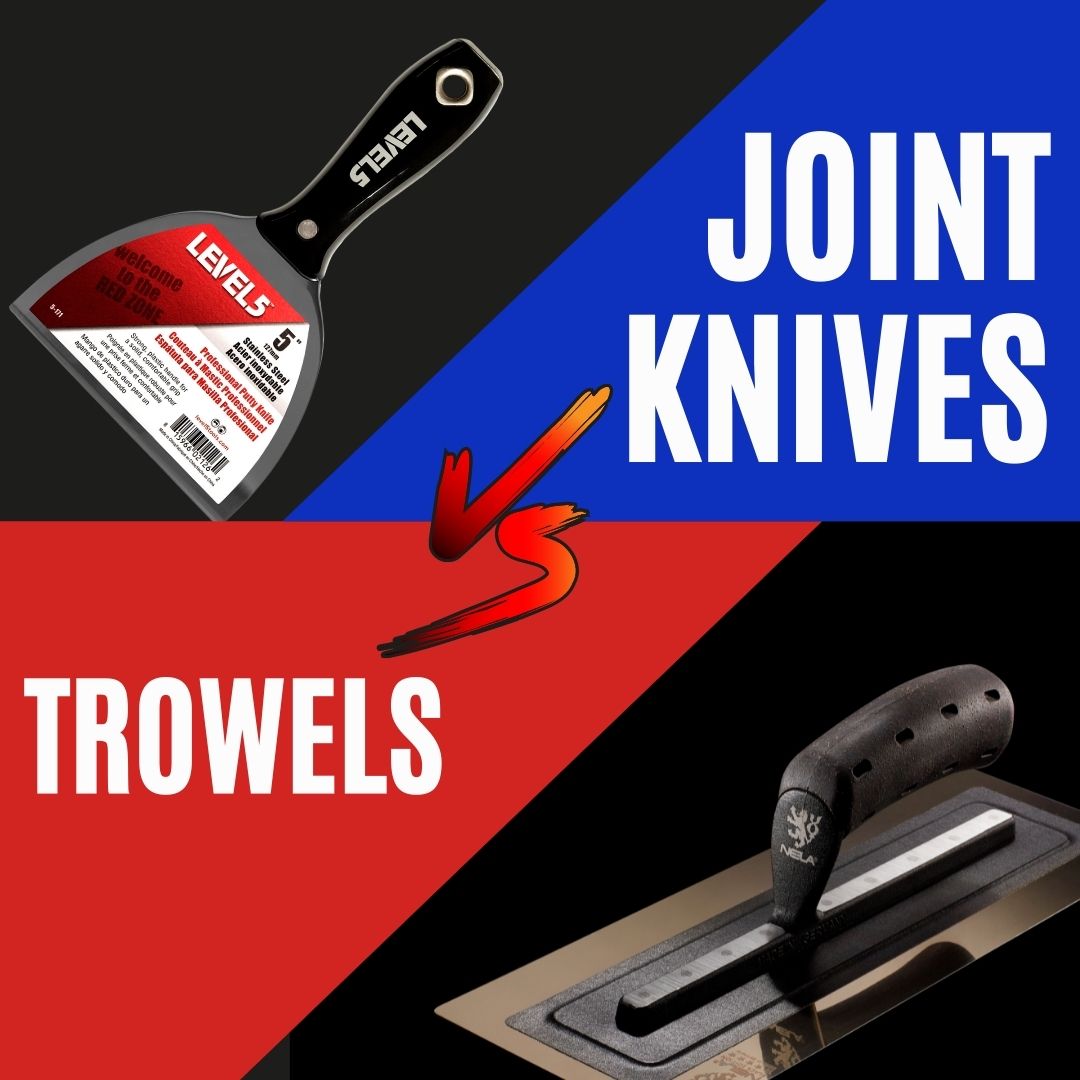
Credit: masterbuildingmaterials.com
Frequently Asked Questions
What Is A Taping Knife Used For?
A taping knife is used for applying joint compound to drywall seams. It’s ideal for smooth finishes.
What Is The Difference Between Taping Knife And Joint Knife?
A taping knife has a wider blade for spreading compound. A joint knife is narrower and used for small areas.
Can I Use A Joint Knife For Taping?
Yes, you can use a joint knife for taping, but it may take longer. A taping knife is more efficient.
What Size Taping Knife Should I Use?
For most drywall projects, a 10 or 12-inch taping knife is recommended. Larger knives cover more area.
Conclusion
Choosing between a taping knife and a joint knife depends on your task. Both tools are essential for drywall work. The taping knife is great for spreading joint compound. The joint knife excels at filling gaps and smoothing seams. Understanding their uses can improve your drywall results.
Always pick the right tool for the job. This saves time and ensures a quality finish. Happy drywalling!
